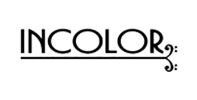“Boosting Sales with Conversion Rate Optimization (CRO) – A Game-Changer”
Introduction: Conversion Rate Optimization
In the dynamic world of e-commerce and digital marketing, businesses are continually seeking innovative ways to boost their sales and revenue. One of the most transformative strategies in this pursuit is Conversion Rate Optimization (CRO). CRO is a multifaceted approach that involves optimizing various aspects of your website or sales funnel to enhance the percentage of visitors who take a desired action, such as making a purchase, signing up for a newsletter, or filling out a contact form. This article explores the profound impact of Conversion Rate Optimization on sales and revenue and delves into the strategies and techniques that can turn CRO into a game-changer for your business.
Understanding Conversion Rate Optimization
1.1. What is Conversion Rate Optimization (CRO)?
At its core, CRO is the process of fine-tuning your online presence to convert a higher percentage of visitors into customers. This entails a comprehensive analysis of your website or landing pages, identifying areas that can be improved, and making data-driven changes to encourage user actions that align with your business goals.
1.2. The Importance of Conversion Rates
Conversion rates are a fundamental metric in the world of digital marketing. They provide insights into the effectiveness of your website in converting casual visitors into paying customers. A high conversion rate signifies a well-optimized website that efficiently guides users towards conversion actions.
1.3. The CRO Funnel
The Conversion Rate Optimization process can be visualized as a funnel, with different stages representing user interactions and conversions. Understanding the funnel’s stages, from initial awareness to the final conversion, is essential for effective Conversion Rate Optimization.
Benefits of Conversion Rate Optimization
2.1. Improved User Experience
A fundamental aspect of Conversion Rate Optimization is enhancing the user experience. A well-designed, user-friendly website that loads quickly, is easy to navigate, and provides valuable content keeps visitors engaged and more likely to convert.
2.2. Higher Conversion Rates
The primary goal of Conversion Rate Optimization is to increase the percentage of visitors who convert into customers. By making incremental improvements to your website’s design, content, and overall functionality, you can boost your conversion rates.
2.3. Enhanced Trust and Credibility
Trust is a crucial factor in online sales. A well-optimized website with clear calls to action and professional design elements can instill trust in your visitors, making them more likely to make a purchase.
2.4. Data-Driven Decision-Making
CRO relies on data and analytics to identify areas where your website is underperforming. By analyzing user behavior and testing different elements, you can make data-driven decisions to improve your site’s performance continually.
2.5. Reduced Bounce Rates
High bounce rates, which occur when visitors leave your site without taking any action, can significantly impact your sales. CRO aims to reduce these rates by addressing factors that contribute to them, such as slow loading times or confusing navigation.
2.6. Increased Return on Investment (ROI)
While driving more traffic to your website is essential, it’s equally crucial to make the most of the traffic you already have. CRO can provide a significant boost to your return on investment (ROI) by increasing the value of your existing traffic.
2.7. Better Targeting
Through CRO, you can create more personalized and targeted experiences for your visitors. This might involve segmenting your audience and tailoring content and offers to their specific needs and preferences.
2.8. Competitive Advantage
Businesses that invest in CRO gain a competitive edge in their industry. By consistently optimizing their websites, they can stay ahead of competitors and adapt to changing market conditions.
2.9. Cost-Effective
Compared to other marketing strategies like paid advertising, CRO can be a cost-effective way to improve sales. It leverages your existing traffic and maximizes its potential, reducing the need for additional advertising spend.
2.10. Scalability
CRO is a scalable approach. As you identify and implement effective optimizations, you can apply them to other parts of your website or marketing channels, further increasing your sales.
Key Components of Conversion Rate Optimization
3.1. A/B Testing
A/B testing, also known as split testing, is a fundamental component of CRO. It involves creating two or more versions of a webpage and showing them to different sets of visitors. By comparing the performance of these versions, you can determine which elements lead to higher conversions.
3.2. User Journey Analysis
Understanding the user journey on your website is critical. This involves analyzing how users navigate through your site, from the moment they land on a page to the point of conversion. By identifying bottlenecks or drop-off points, you can make targeted improvements.
3.3. Content Optimization
High-quality, relevant content is a cornerstone of CRO. Optimizing your content involves ensuring that it speaks to your target audience, addresses their pain points, and encourages them to take action.
3.4. Clear Calls to Action (CTAs)
Effective CTAs are vital for guiding users toward conversion. They should be prominently displayed, clear, and persuasive. CRO involves optimizing the placement and design of CTAs for maximum impact.
3.5. Landing Page Optimization
For many businesses, landing pages are where conversions happen. Optimizing these pages for clarity, relevance, and user engagement is a key part of CRO.
3.6. Mobile Optimization
Given the increasing use of mobile devices, optimizing your website for mobile users is crucial. A responsive design and fast-loading pages on mobile can significantly impact your conversion rates.
Implementing a CRO Strategy
4.1. Setting Clear Goals
The foundation of a successful CRO strategy is setting clear, measurable goals. Whether it’s increasing sales, newsletter sign-ups, or lead generation, defining your objectives is the first step.
4.2. Gathering Data
Data collection and analysis are central to CRO. You need to have access to website analytics, user behavior data, and other relevant metrics to identify areas that need improvement.
4.3. Identifying Problem Areas
Through data analysis, you can pinpoint specific areas of your website or sales funnel that are underperforming. This might include high bounce rates, low click-through rates, or drop-offs in the conversion funnel.
4.4. Prioritizing Changes
Not all website elements require immediate attention. Prioritizing changes based on their potential impact and ease of implementation is a crucial part of a CRO strategy.
4.5. Testing and Experimentation
A/B testing and other types of experimentation are central to CRO. These tests allow you to validate hypotheses, understand user preferences, and make data-driven improvements.
4.6. Continuous Optimization
CRO is an ongoing process. Once you’ve implemented changes and observed results, it’s important to continuously optimize your website to stay competitive and adapt to evolving user behavior.
CRO Best Practices
5.1. Customer Personas
Understanding your target audience and creating detailed customer personas is essential for effective CRO. Personas guide content creation and help tailor the user experience to your ideal customers.
5.2. Consistent Messaging
Consistency in messaging and branding across your website and marketing materials is crucial. Inconsistencies can confuse visitors and erode trust.
5.3. Page Load Speed
Fast-loading pages are a prerequisite for a positive user experience. Slow-loading websites can lead to high bounce rates and lost conversions.
5.4. Trust Signals
Building trust is vital for conversions. Trust signals, such as customer reviews, security badges, and clear privacy policies, can reassure visitors and encourage them to take action.
5.5. Customer Testimonials
Leveraging customer testimonials and case studies can be a powerful tool in CRO. Positive feedback from satisfied customers can persuade potential buyers to follow suit.
5.6. Personalization
Personalized content and offers can significantly improve the user experience. Using data to tailor content to individual users’ preferences can boost engagement and conversions.
5.7. Social Proof
Highlighting the popularity of your products or services through social proof indicators, such as the number of customers served or products sold, can create a sense of urgency and encourage conversions.
Challenges and Pitfalls
6.1. Over-Optimization
While optimizing your website is essential, there is a point at which over-optimization can occur. This can lead to a cluttered, confusing user experience, which may negatively impact conversions.
6.2. Misinterpreting Data
Interpreting data correctly is vital for making informed decisions. Misinterpretation can lead to misguided changes that harm rather than help your conversion rates.
6.3. Focusing Solely on Conversions
It’s essential to strike a balance between conversion optimization and overall user experience. Prioritizing conversions at the expense of a seamless, user-friendly website can backfire.
6.4. Neglecting Mobile Users
With the increasing prevalence of mobile devices, neglecting mobile optimization can lead to missed opportunities. Mobile users should be a central consideration in your CRO strategy.
6.5. Neglecting Long-Term Planning
CRO is not a one-time effort. Neglecting long-term planning can lead to missed opportunities for ongoing optimization and improvement.
Case Studies
7.1. Amazon: A Master of Conversion Rate Optimization
Amazon’s relentless focus on conversion optimization is a primary driver of its e-commerce dominance. From personalized product recommendations to a frictionless checkout process, Amazon’s Conversion Rate Optimization strategies have set the standard for the industry.
7.2. Dropbox: The Power of Simplicity
Dropbox’s CRO success story revolves around simplicity. By streamlining its homepage and simplifying its value proposition, Dropbox saw a 10% increase in sign-up conversions.
7.3. Barack Obama’s 2008 Campaign
The 2008 Obama campaign leveraged CRO techniques to raise an astounding $60 million. By consistently testing and optimizing email campaigns, the campaign achieved remarkable results.
Tools and Resources for CRO
8.1. Analytics Tools
Google Analytics, Mixpanel, and other analytics tools provide essential data for Conversion Rate Optimization efforts. These platforms help you track user behavior, engagement, and conversions.
8.2. A/B Testing Tools
Optimizely, VWO, and Google Optimize are popular A/B testing tools that allow you to experiment with different website versions and measure their impact on conversions.
8.3. Heatmap and Session Recording Tools
Tools like Hotjar and Crazy Egg provide insights into user behavior by visualizing where users click, move, and engage with your website.
8.4. Customer Feedback Tools
Customer feedback tools like SurveyMonkey and UserVoice allow you to gather insights directly from your audience, helping you understand pain points and areas for improvement.
8.5. Online Courses and Communities
Online courses and communities like CXL Institute and the Conversion Rate Optimization subreddit offer valuable resources and a community of experts to learn from and share experiences with.
The Future of CRO
9.1. AI and Machine Learning
Artificial intelligence and machine learning are increasingly being integrated into Conversion Rate Optimization efforts. These technologies can analyze vast amounts of data to identify trends and suggest optimizations.
9.2. Voice Search and IoT
As voice search and Internet of Things (IoT) devices become more prominent, adapting your Conversion Rate Optimization strategy to these emerging technologies will be crucial for staying competitive.
9.3. Personalization
The demand for personalized experiences is growing. The future of Conversion Rate Optimization will likely involve more sophisticated personalization strategies to cater to individual user preferences.
9.4. Ethical Considerations
With the collection and use of user data, ethical considerations are coming to the forefront. Balancing the need for data-driven optimization with user privacy and trust will be a challenge in the future.
Conversion Rate Optimization is not merely a tactical approach to increasing sales; it is a strategic imperative for businesses operating in the digital realm. Through its ability to enhance the user experience, harness data and analytics, and continuously optimize various elements of your online presence, Conversion Rate Optimization can transform your website into a potent sales engine. With its benefits, best practices, and an eye on the future, Conversion Rate Optimization represents a game-changing force in the world of digital marketing and e-commerce. By embracing Conversion Rate Optimization , businesses can unlock their true sales potential and secure a competitive edge in an ever-evolving landscape.












